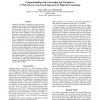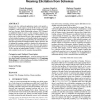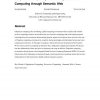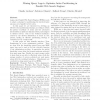306 search results - page 33 / 62 » How knowledge workers use the web |
AAAI
2007
2007
Comprehending and Generating Apt Metaphors: A Web-driven, Case-based Approach to Figurative Language
13 years 10 months ago
Examples of figurative language can range from the explicit and the obvious to the implicit and downright enigmatic. Some simpler forms, like simile, often wear their meanings on...
SEMWEB
2004
Springer
14 years 1 months ago
2004
Springer
The standardization of the second generation Web Ontology Language, OWL, leaves a crucial issue for Web-based ontologies unsatisfactorily resolved: how to represent and reason with...
WWW
2006
ACM
14 years 8 months ago
2006
ACM
In most web sites, web-based applications (such as web portals, emarketplaces, search engines), and in the file systems of personal computers, a wide variety of schemas (such as t...
ISEM
2006
13 years 7 months ago
2006
Ubiquitous computing refers to building a global computing environment where seamless and invisible access to computing resources is provided to the user. Pervasive computing deal...
INFOSCALE
2007
ACM
13 years 9 months ago
2007
ACM
Large-scale Parallel Web Search Engines (WSEs) needs to adopt a strategy for partitioning the inverted index among a set of parallel server nodes. In this paper we are interested ...




